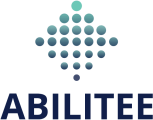Consensus among musculoskeletal experts for the management of patients with headache by physiotherapists?
A delphi study (De Pauw et al, 2021) Headaches are the second most common disorder in terms of all-age cases with a year by year increasing prevalence.
Tension- type headache (TTH) – global prevalence of 38.0%
Migraine – global prevalence of 10.0%
Cervicogenic headache (CeH) – a secondary headache, between <1.0% to 2.5%.
In 2021, De Pauw et al conducted a Delphi study aiming to reach consensus among international MSK experts on what the most appropriate management is in patients that suffer headache.
The Delphi method is a structured method aiming to collet expert-based judgements and to use them to identify consensus.
A total of 14 experts, 4 rounds, Consensual agreement was set at ≥ 80%
Here are some Important points to consider:
Clinical indicators to consider for headache:
- Active and passive mobilizations of the cervical spine (Experiencing headache symptoms at the same time as cervical spine related symptoms).
- Limited ROM (upper and mid cervical spine and thoracic spine).
- Unilateral pain on movement.
- Positive passive joint provocation test.
- Positive cervical flexion rotation test.
- Posture-related complaints (i.e., antalgic posture, complaints modified by changes in posture, changed posture such as forward head posture, chin tuck).
- Impaired muscle length/stiffness (muscle tightness, sensation of tension).
Treatments for headache to consider for headache:
- CeH – manual therapy (upper cervical spine mobilisations) and active mobilisation exercises of the cervical spine.
- TTH – trigger point therapy and manual therapy (combined with exercises) and lifestyle advice.
- Migraine – lifestyle advice.
- Surprisingly, the participants did not agree on the usefulness of aerobic exercises in migraine and trigger point therapy in CeH.
Further research involving more experts with various backgrounds from around the world and comparing different treatment strategies, is needed to compile a more tailored treatment-based classification.


